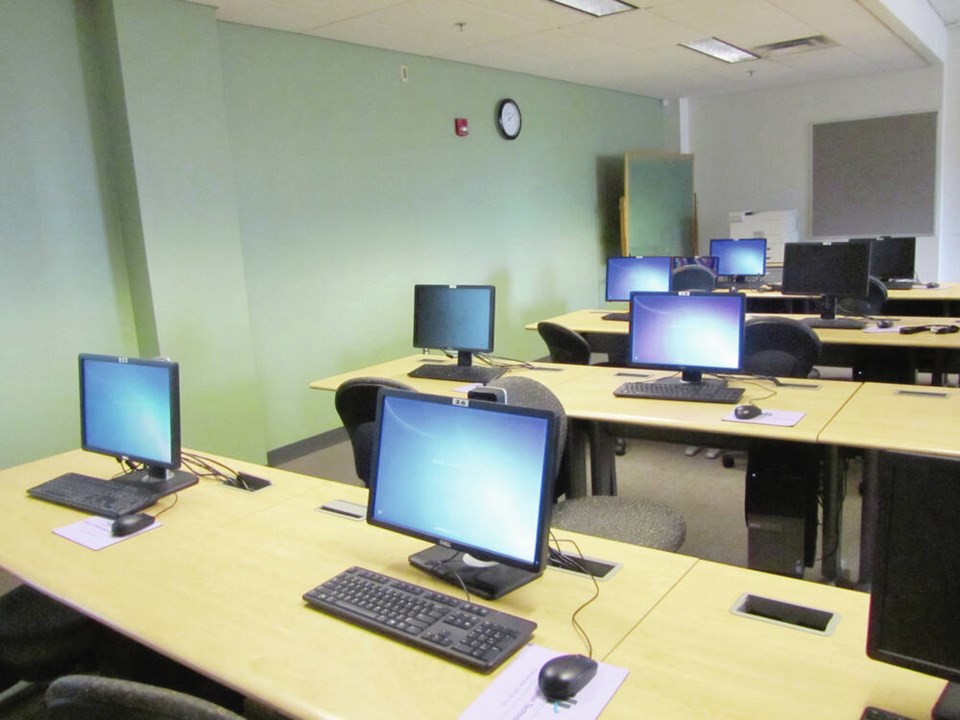Analysts expect education-technology profits to reach an eye-watering (and mouth-watering for shareholders of EdTech companies) $300 billion US globally this year.
Education technology, in just a few years, has become a major part of the 21st-century learning experience for children in the K-12 years and beyond, as well as an overnight mega-business.
It has suddenly required a whole new field of study that analyses, designs and evaluates learning materials, learners and the learning process in order to improve teaching and learning.
EdTech introduces a whole new program of study not just for kids but for teachers, who need to know not only how to get the most out of each new tool, but how to teach their students about the use of the new tools.
And this hurried pace of technological change doesn’t end with the purchase of updated equipment — that is just the beginning of implementing educational technology in the classroom.
Curriculum, assessment and instruction must be synchronised with the new hardware and software to reach EdTech’s teaching and learning potential.
Training teachers before the latest technology ever gets into the hands of the kids requires time and money but is absolutely necessary if students are expected to get the desired benefits.
Providing classrooms with the latest EdTech hardware or software that neither teacher nor student can use effectively can be distracting from curricular goals as well being a potentially time-consuming waste of the new resource.
Then there is the pedagogical question about how much of a “prop” technology should be for a student. It seems not so long ago there was a debate about whether certain types of calculators should be allowed in the classroom since they essentially solved problems for students who struggle with math.
The same may be true for software apps that supply quick, accessible answers for problems that a student should actually be thinking about in greater depth.
Teachers worry that while the technology is engaging on a creative level, students may be missing out on internalizing basic concepts of math and language.
Outside the classroom, policy makers question the wisdom of spending tax dollars on EdTech systems before knowing whether they are really helpful for educational growth.
Some research has shown that many EdTech start-ups, in their desire to be first in line with newly marketable hardware and software, haven’t put enough focus on hard evidence of the teaching and learning advantages for their products.
As one example, a recent report by Edtech Impact, a U.K.-based independent-review platform for EdTech, found that only seven per cent of EdTech companies had used randomized controlled trials to find evidence of impact on classroom practice. Instead, the most frequently cited benchmarks of evidence were customer quotes and school case studies.
Just as disquieting in terms of social and educational equality, the Organisation for Economic Co-operation and Development reports that on average across OECD countries, including sa╣·╝╩┤½├Į and the U.S., only nine per cent of 15-year-old students have a quiet place to study in their homes.
The same report found that half of the students kept out of the classroom worldwide by COVID-19 (close to 800 million students) did not have access to a household computer. Further investigation revealed that 43 per cent (700 million students) had no Internet access at home and that about 56 million students live in locations that are not served by mobile networks.
The same OECD report also found that 35 per cent of 15-year-olds in OECD countries are enrolled in schools where teachers do not have the necessary pedagogical and technical skills to integrate digital technology in education.
The swift growth of the $300 billion US worldwide EdTech industry adds meaning to economist and Nobel Prize winner Milton Friedman’s famous 1970 dictum that that the only social responsibility of business was to maximize profits and that “the business of business is business.”
Maybe so, but it is also time that political leaders and educational policy makers see to it that technology in education does not contribute to the amplification of existing social inequalities and deepen what is now being referred to as “the digital divide.”
To ensure digital technology provides equitable and inclusive access to educational opportunity, it will become increasingly necessary to focus on closing a digital divide that could shut out those students unable to access the variety of technologies bringing advantages to their peers.
Geoff Johnson is a former superintendent of schools.



